Are Hydroponics More Consistent And Reliable Than Normal Gardening?
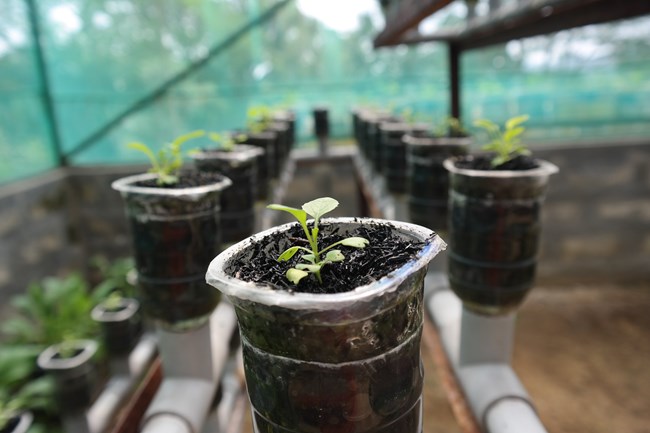
When you think about the produce grown for concession food service operations, do you picture acres of open fields, rows of tilled soil, and seedlings lining the tops of the mounds? While much of the world's fruits and vegetables are grown this way, there are other ways to grow produce without large amounts of land — and even without soil!
Hydroponic plants are exposed to light to allow for the process of photosynthesis, and plant roots are exposed to air allowing the roots to capture oxygen that they need to grow. Nutrients mixed into water include:
-
Phosphorus
- Nitrogen
- Calcium
In some hydroponic systems, a growing medium is used to support the plant roots and allow for more effective water absorption to the root structure. One type of growing medium commonly used is coconut coir — a shredded fibrous product made from coconut husk. A subset of hydroponics, called aeroponics, requires only light, water and nutrients, and does not use a growing medium.
What Are the Benefits of Hydroponics?
-
Enhanced plant yields: Hydroponic plants produce a greater yield of fruits and vegetables because in a hydroponic system plants are more densely spaced together compared to the size of land that would be needed to grow the same number of plants. Also, in a hydroponic system many of the elements that can enhance plant growth — such as the pH level of the water, nutrient content of the water, amount and type of light, etc. — can be better controlled.
-
Less water: Hydroponic systems use less water — as much as 10 times less water — than traditional field crop watering methods because water in a hydroponic system is captured and reused, rather than allowed to run off and drain to the environment.
-
Locally grown: Indoor hydroponic systems allow plants to grow almost anywhere all year round.
-
Less space: Hydroponic systems come in a variety of designs including vertical stacking systems that take up a small amount of space.
What Are theTypes of Hydroponic Systems?
There are several types of hydroponic systems.
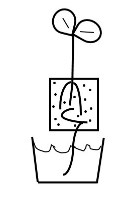
Wick
Plant roots grow down through a medium while an absorbent "wick" draws nutrient-filled water up from a water reservoir to the root system zone. The growing medium allows for air (oxygen) to reach the roots.
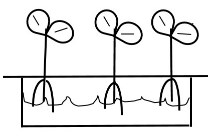
Air-Gap
Plant roots hang partially in nutrient-filled water while the upper part of the root system is exposed to air (oxygen).
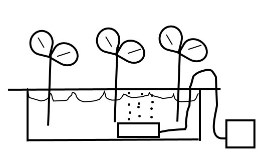
Raft
Plants are positioned on a floating surface with their roots hanging in nutrient-filled water. An aquarium-type pump supplies oxygen to the water which is picked up by the roots.
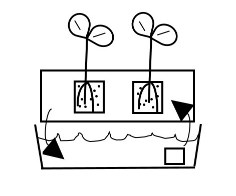
Ebb and Flow
Plant roots grow through a medium. Nutrient-filled water is pumped on a frequent basis (e.g., every 30 minutes) to the root zone area and allowed to drain back into a water reservoir.
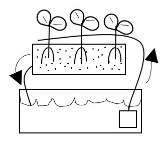
Top Feeder
Plant roots grow through a medium. The growing medium allows for air (oxygen) to reach the roots. Nutrient-filled water is pumped to the top of the medium, allowed to percolate down to the root zone, and then drained back to a water reservoir.
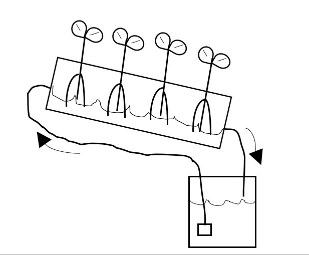
Nutrient Film Technique (NFT)
Plants are positioned on a floating surface hanging in a trough that is slightly tilted. The plant roots hang with the upper part of the root system exposed to air (oxygen). The bottom part of the roots is exposed to nutrient-filled water that is pumped into the trough at the upper (higher) end. The water flows past (down) the other root systems and back into a water reservoir.
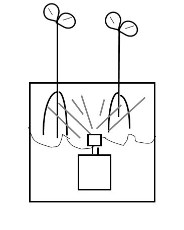
Aeroponics
Plant roots are positioned in an enclosed space and exposed to air (oxygen) where on a frequent basis (e.g., every 30 minutes) nutrient-filled water flows through the enclosed space or is sprayed via a mist.
How Do I Incorporate Hydroponics into Concession Food Service Operations?
Considering using a hydroponic system to grow produce for a concession operation? Be sure to talk with park management as well as your regional NPS Office of Public Health consultant to determine the feasibility for an onsite hydroponic garden. Also, review the NPS Office of Public Health factsheet titled Using Non-Approved Foods and Produce Sources for Concessions Operations.
Hydroponic systems offer a lot of benefits but are not perfect. Consider the following before starting a hydroponic system:
-
Food safety: Growing food for human consumption requires proper handling, washing, storage, and labeling per U.S. Department of Agriculture requirements.
-
Disease: Hydroponic plants are not immune to disease and because most systems are closed systems (meaning the water recirculates), bacteria or micro-organisms that get into the water source can affect every plant in the hydroponic system.
-
Energy use: Depending on geographic location, indoor hydroponic gardens may need artificial light which may increase the amount of energy needed to run the concession operation. Additionally, most hydroponic systems need an electronic pump to pump water to the plants.
-
Seed dispersal: In a national park setting, consideration must be given to seed dispersal for outdoor hydroponic systems. The wind or animals could spread plant seeds to other areas of the national park.
Still interested in a hydroponic system?
Below are a few ways to incorporate hydroponics into your concession operation.
-
Utilize vertical hydroponic systems for small spaces: Vertical hydroponic systems do not use much space and can be used indoors or outdoors.
-
If onsite hydroponic systems are not feasible for your concession operation, look for local farmers or other small businesses using hydroponic systems. Some farmers may be flexible enough to grow the specific produce desired for your concession operation.
Are Hydroponics More Consistent And Reliable Than Normal Gardening?
Source: https://www.nps.gov/articles/hydroponics.htm
Posted by: holtmanlepaso.blogspot.com

0 Response to "Are Hydroponics More Consistent And Reliable Than Normal Gardening?"
Post a Comment